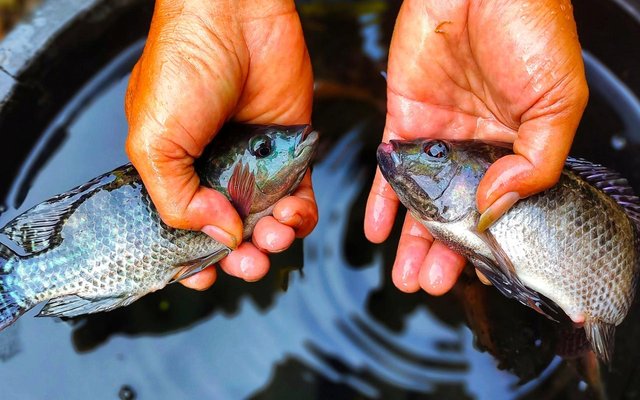The first full, high-quality reference genome for a genetically improved tilapia strain has been published. A collaboration between the Earlham Institute, the Roslin Institute, and WorldFish has produced this resource for fish breeders looking to develop strains that grow bigger, grow quickly, and have improved resilience to the environmental challenges of a warming planet. It reveals substantial and unique genetic variation in farmed strains of tilapia, highlighting the need to use this strain-specific resource to inform future breeding programs.
The Nile tilapia (Oreochromis niloticus) is the third most farmed species of fish in the world. Its success is largely thanks to continuous efforts to breed strains that can grow and gain weight quickly. The Genetically Improved Farmed Tilapia (GIFT) program, spearheaded by the research institution WorldFish (CGIAR), has given rise to tilapia strains through selective breeding without a complete reference genome.
Wilfried Haerty, study author and group leader at the Earlham Institute, said that “a reference genome provides a full, annotated catalog of all the genes in an organism. This crucial resource is the basis for modern breeding programs. WorldFish, who are leading on further developments of GIFT, can now use the reference genome as the baseline to work from when looking to breed beneficial traits.”
The reference genome
To accelerate the development of improved GIFT strains through genomic selection, researchers at the Earlham Institute and Roslin Institute teamed up to generate a near-complete and high-quality reference genome.
WorldFish provided tissues to Earlham Institute researchers, who used a combination of short- and long-read sequencing techniques to create a chromosome-level genome assembly for GIFT. This was supported by a linkage map developed at the Roslin Institute, built on work from WorldFish to develop an SNP chip. The genome was then annotated, using a cutting-edge approach developed by the Swarbreck Group at the Earlham Institute.
John Benzie, WorldFish acting director of Aquatic Foods Biosciences, said that “this collaboration has laid a strong foundation for us to produce new strains of GIFT that are more resilient to a changing climate – reducing production risks for fish farmers and increasing yield to feed nutritious animal protein to a growing global population.”
The GIFT strain was originally developed from a mix of commercial and wild Nile tilapia strains, as well as crosses with other species. By using the genomes of closely-related species, including Oreochromis mossambicus and Oreochromis aureus, they were able to reveal the extent to which genetic material may have passed between species in the past and identify the specific regions in the GIFT genome.
They found over 11 million bases of O. mossambicus genomic material within the GIFT genome, including genes associated with immunity and growth rate. The discovery will help guide future breeding programs and improve the understanding of genes associated with beneficial traits in farmed fish species.
“Because of the breeding history of elite strains, we now realize the reference genomes currently available might not be suitable to support further studies into elite strains,” explained Haerty.
Diego Robledo, study author at the Roslin Institute, said that “the insights offered by the development of the entire genome of this key fish species will enable research towards ensuring sustainably produced supplies, to support a healthy source of nutrition for growing populations.”
Reference:
Etherington, G.J., Nash, W., Ciezarek, A. et al. Chromosome-level genome sequence of the Genetically Improved Farmed Tilapia (GIFT, Oreochromis niloticus) highlights regions of introgression with O. mossambicus. BMC Genomics 23, 832 (2022). https://doi.org/10.1186/s12864-022-09065-8













